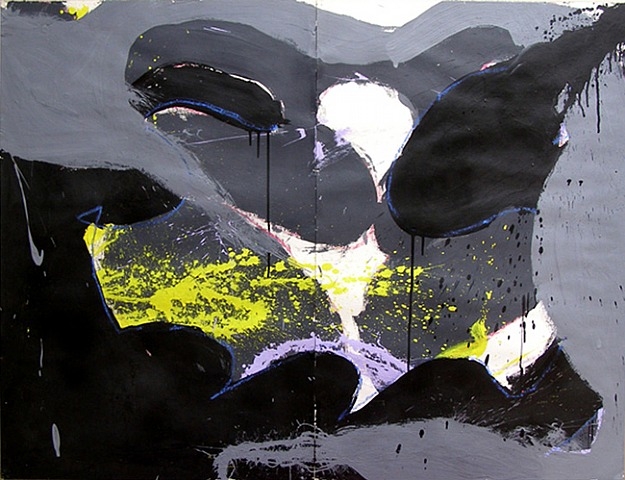From there he went on to become a newspaper illustrator, obtaining a job with the New York Journal. In New York he also studied at the Art Students League. He was dispatched from New York to cover the 1906 San Francisco earthquake, but decided to remain in his native city where he would then take up his painting career.
Gray's first pieces, headland seascapes, were exhibited in 1907; soon thereafter he addressed in watercolour eucalyptus groves and fields of California wildflowers. These subjects would become signatures of his work. Originally Gray's works were oils; however, he eventually developed an allergy to oil paints, and therefore switched to using watercolours as his primary medium.
From early on the critics marvelled at his ability to infuse realistic depictions of nature with a mystical and poetic quality. He was clearly applying the precepts of his mentor William Merritt Chase in the exaggeration of light and colour.
From 1912 to 1923 Gray lived in Burlingame, California about twenty miles south of San Francisco, while keeping his studio in the city itself. At the 1915 Panama-Pacific International Exposition he won a bronze medal for his watercolour Out of the Desert, Oregon. Having been a bachelor for 53 years, Gray surprised his friends by marrying. He and his bride moved to the Bonificio Adobe in Monterey, where seascapes and cypress dominated his later works. In 1939 the Grays sold their adobe and moved to San Francisco. Restless for the out of doors, Gray and his wife moved to San Anselmo at the base of Mount Tamalpais in 1941. After ten years in Marin County, his wife died and he returned to San Francisco. Gray died in 1952.
I’m afraid I don’t have the dates for many of Gray’s works.
 |
| 1907 San Francisco Bay from the Alameda Hills watercolour 31 x 36 cm |
 |
| 1909 Tree on a Hillside watercolour 33 x 28 cm |
 |
| 1918 California Landscape oil on canvas 48 x 71 cm |
 |
| 1924 Cypress Trees Near Point Lobos watercolour 40 x 50 cm |
 |
| 1926 Rogue River Gorge watercolour 56 x 41 cm |
 |
| 1926 Two Oaks watercolour |
 |
| 1927 Path to the Blue Mountains watercolour |
 |
| 1930 Weathered Oak (detail) watercolour and gouache 25 x 36 cm |
 |
| c1934 Corral de Tierra watercolour 33 x 48 cm |
 |
| Aetna Springs, California watercolour 31 x 41 cm |
 |
| Aetna Springs, California watercolour 31 x 41 cm |
 |
| Aetna Springs, California watercolour 51 x 41 cm |
 |
| Aetna Springs, California watercolour 51 x 41 cm |
 |
| Autumn Dunes watercolour 31 x 41 cm |
 |
| California Ranch watercolour 36 x 46 cm |
 |
| Early Meadow Landscape watercolour 26 x 33 cm |
 |
| Entrance to the Golden Gate watercolour 41 x 51 cm |
 |
| Flower Field Carmel Valley watercolour 41 x 51 cm |
 |
| Guardian Oak etching 13 x 16 cm |
 |
| Into the Valley etching |


































